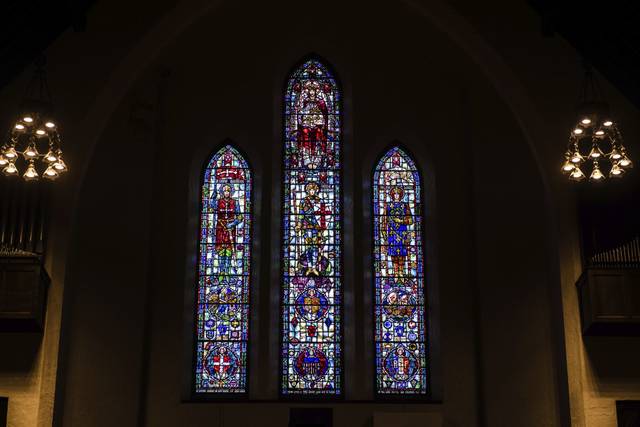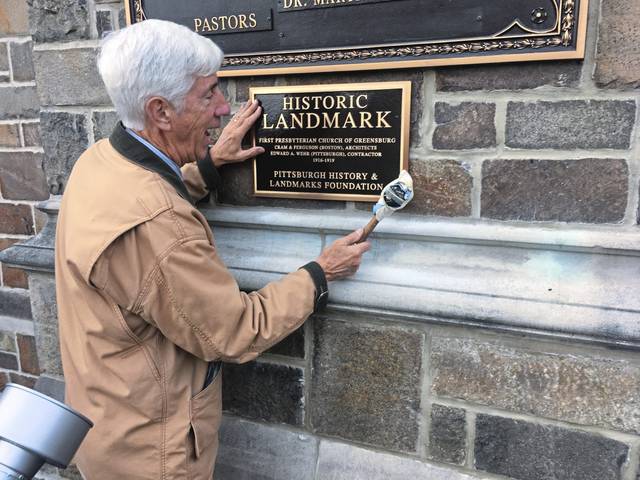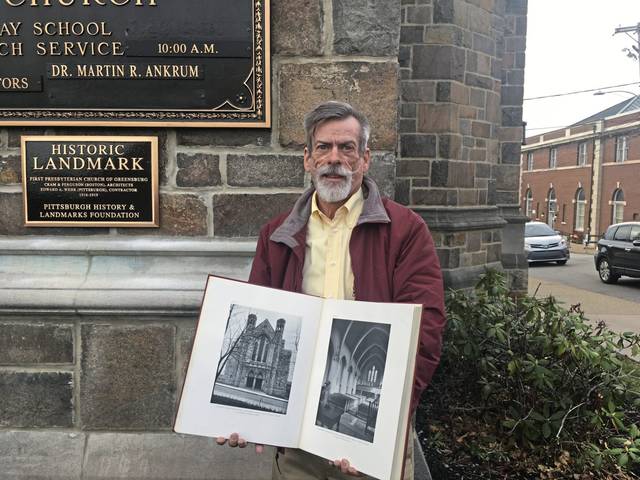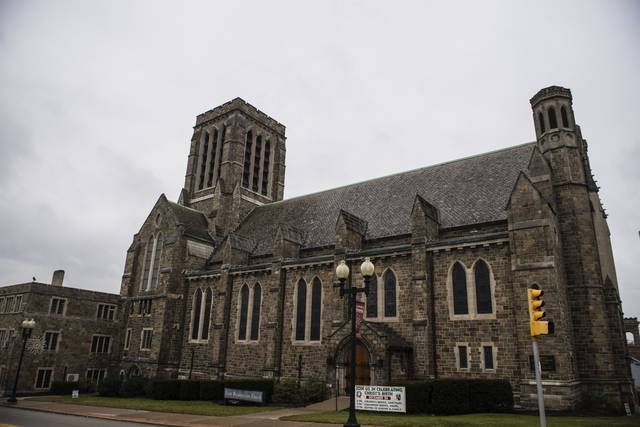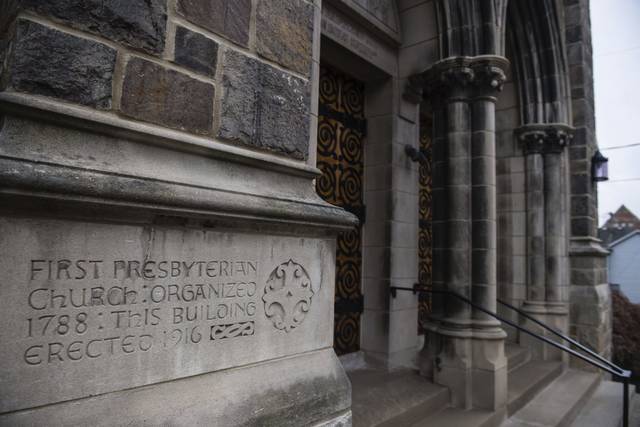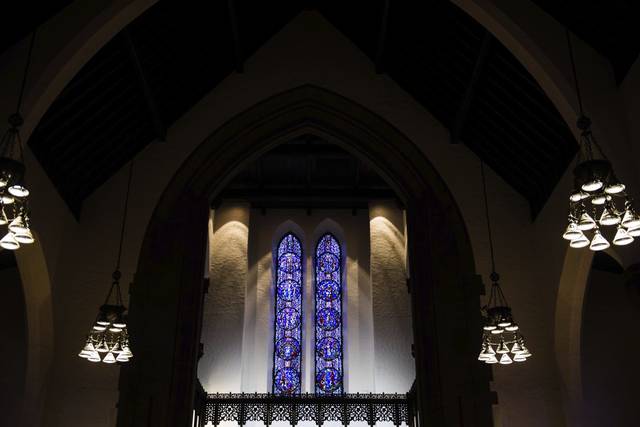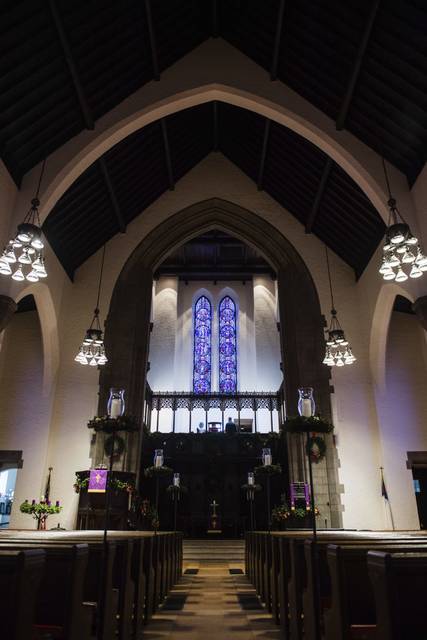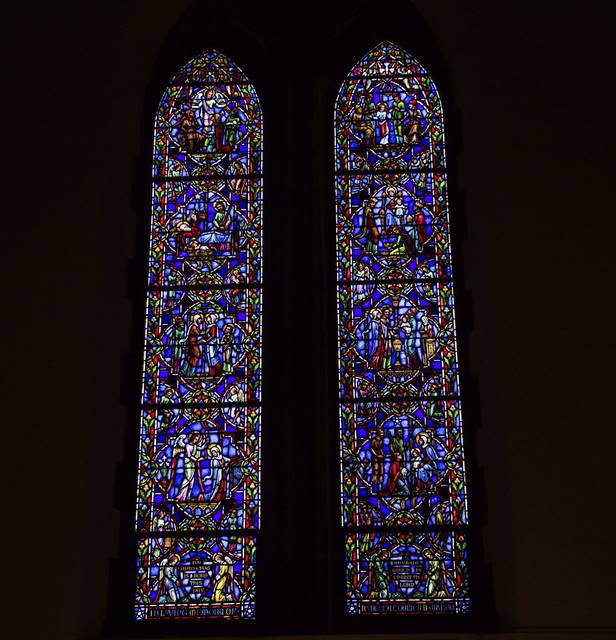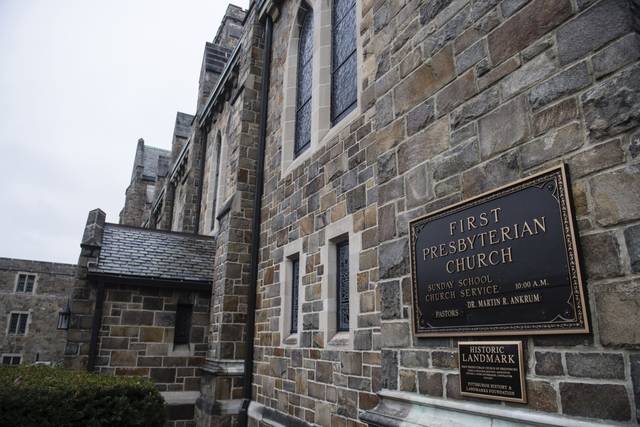Greensburg First Presbyterian Church designated architecturally significant
A landmark, 101-year-old Greensburg church now has earned architecturally significant status from a Pittsburgh preservation organization.
The First Presbyterian Church along South Main Street may be Westmoreland County’s first house of worship to receive the designation from the Pittsburgh History & Landmarks Foundation, according to Karamagi Rujumba, the foundation’s communications director.
By contrast, the foundation has designated 95 churches and temples in Allegheny County as architecturally significant.
“This church is a treasure — the stone, the brick, the wood and the (stained) glass. This building (through the stained glass windows) tells the story of Jesus’ life. It teaches a lesson in art and culture,” said David R. McMunn of Greensburg, the church’s architectural historian.
“It is an honorific (designation). It comes with no significant enforcement” that would prohibit changes being made to the building, Rujumba said.
The First Presbyterian Church at the corner of South Main and East Third streets was selected, in part, because the building was designed by a prominent architect, Rujumba said.
Ralph Adams Cram of the Boston firm of Cram & Ferguson was well known for designing churches for Presbyterian and other denominations before he was commissioned in 1913 to design the Greensburg church, McMunn said. Cram was the leading architect of his day, according to John Conti, who had written extensively for the Tribune-Review on architecture, planning and historic-preservation issues.
Before designing the Greensburg building, he designed the Calvary Episcopal Church in Shadyside in 1907. Afterward, he designed the Holy Rosary Roman Catholic Church in Homewood in 1928. His crowning achievement was the majestic East Liberty Presbyterian Church, which was paid for by banking financier Richard Beatty Mellon in 1935, McMunn said.
Cram designed the First Presbyterian Church in a modified English Gothic style, McMunn said. Ground was broken in 1916 and construction began in 1917, around the time the United States entered World War I.
While the church was being built, members of the congregation founded in 1849 worshipped in the Westmoreland County Courthouse, McMunn said.
The church was finished by June 1918. A formal dedication was delayed until October 1919 because 98 of the parishioners had joined the American Expeditionary Force to fight in the war. Even the pastor was tapped for the Army, serving as a chaplain on front lines in France, McMunn said. Five parishioners died in the war.
The original windows in 1919 were green glass, but over the next 40 years, most were replaced by stained glass windows, McMunn said.
Windows above the balcony area form a war memorial recognizing America’s Allies in the Great War - England, France and Italy — with stars representing the parishioners who fought overseas and five gold stars in memory of those who died.
“It was very forward thinking to have human figures in the stained glass,” McMunn said.
Other stained glass windows tell the story of the Old and New Testament, as well as Jesus’ Passion, the Psalms, Jesus’ miracles, parables and the Nativity. Previous buildings of the First Presbyterian Church are depicted in one window, as well as the country courthouse.
“It tells a wonderful story of how we are here and why we are here,” McMunn said.
Joe Napsha is a TribLive reporter covering Irwin, North Huntingdon and the Norwin School District. He also writes about business issues. He grew up on Neville Island and has worked at the Trib since the early 1980s. He can be reached at jnapsha@triblive.com.
Remove the ads from your TribLIVE reading experience but still support the journalists who create the content with TribLIVE Ad-Free.

